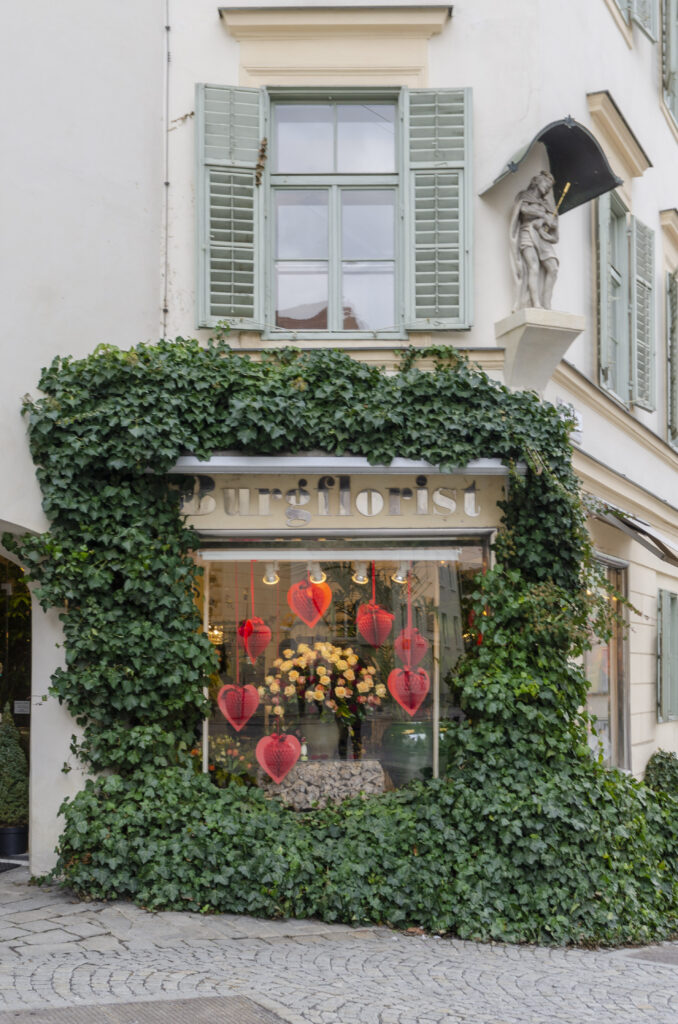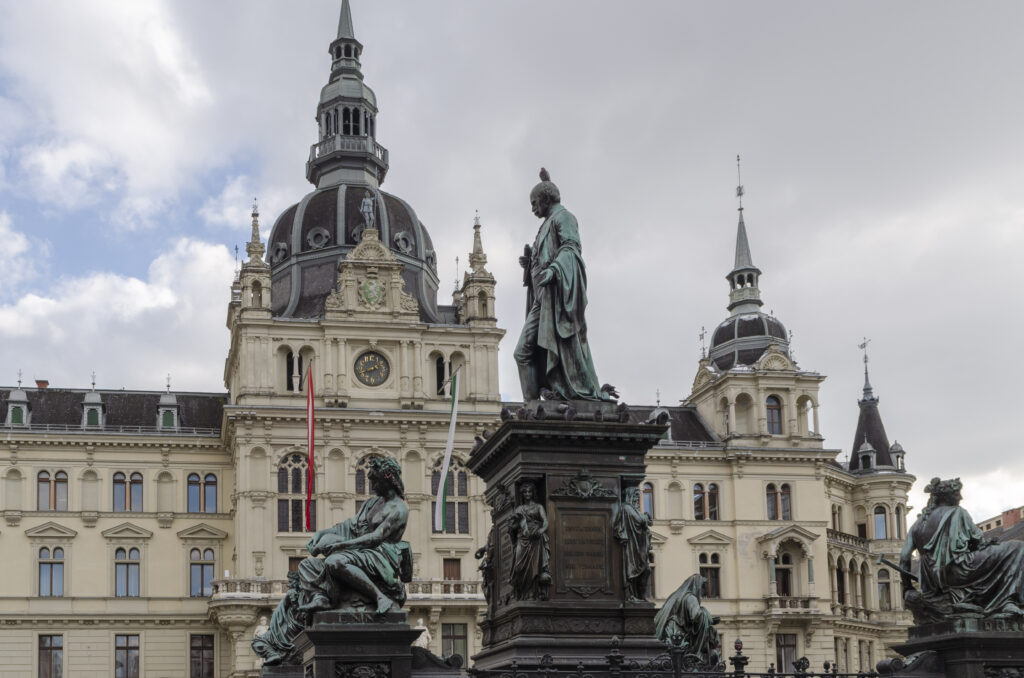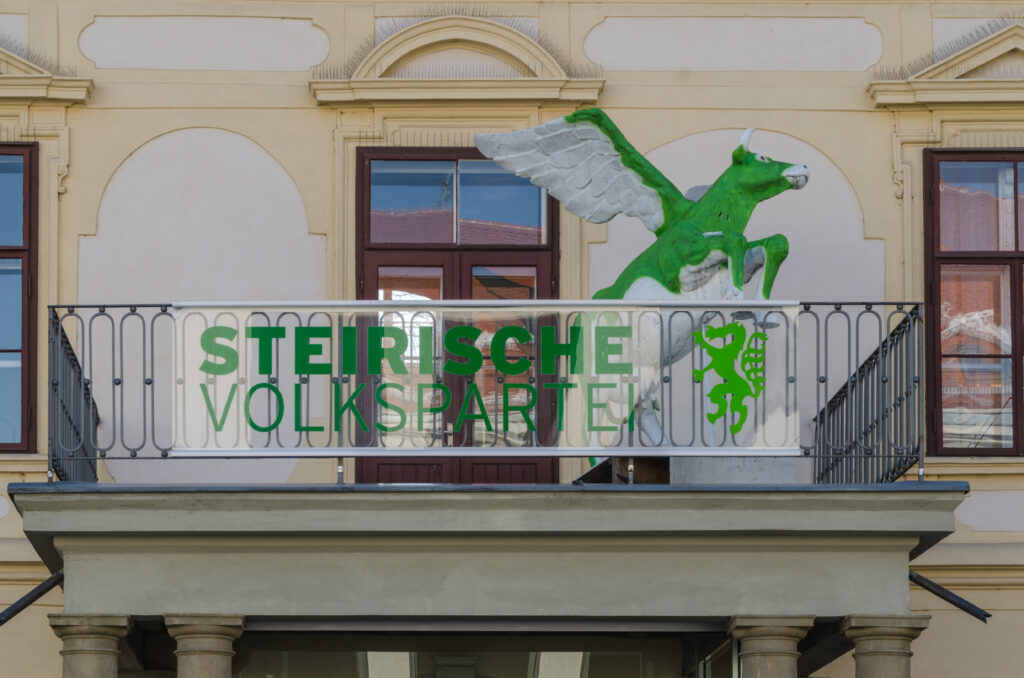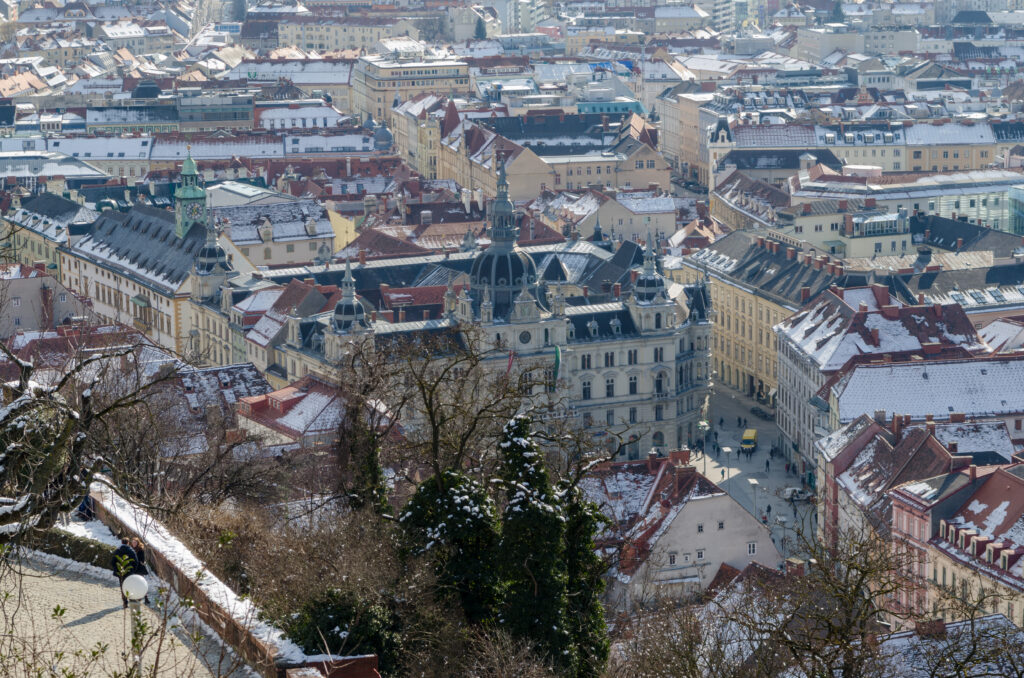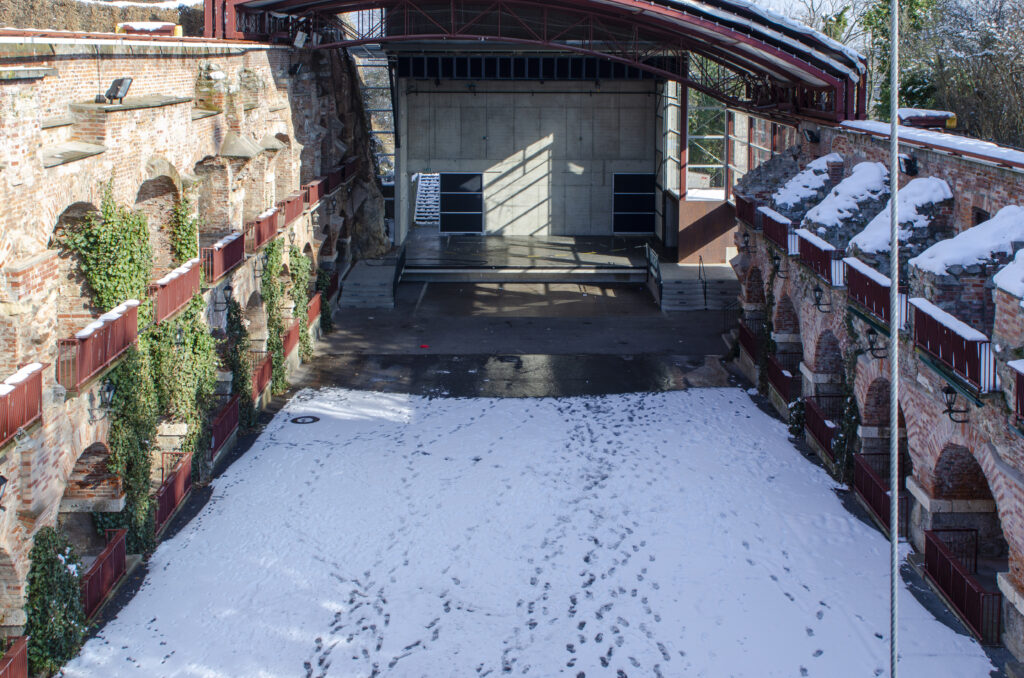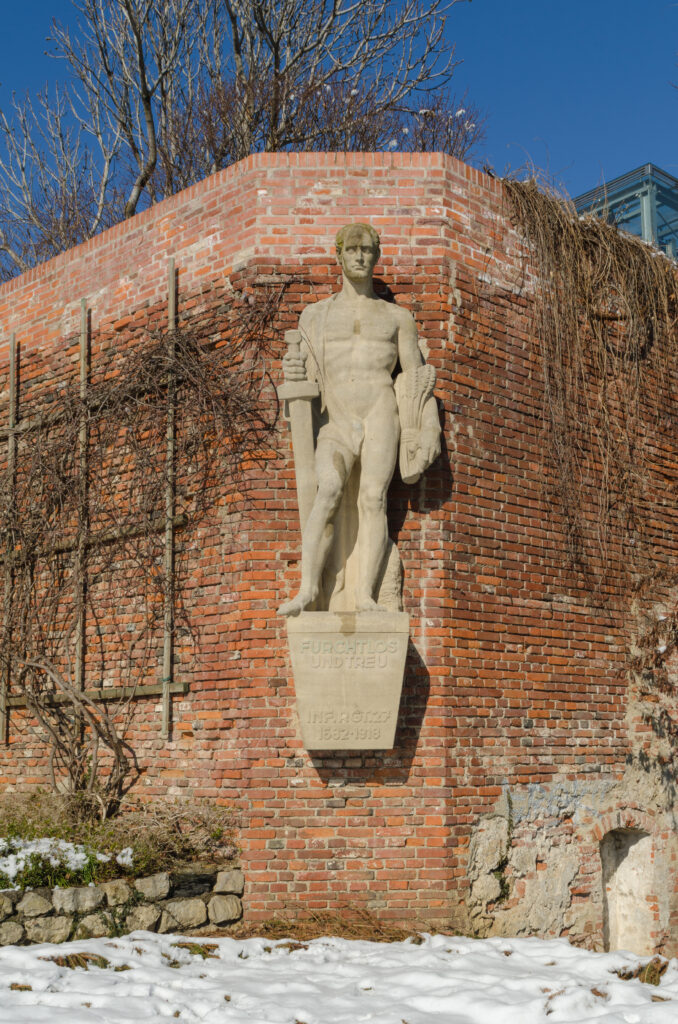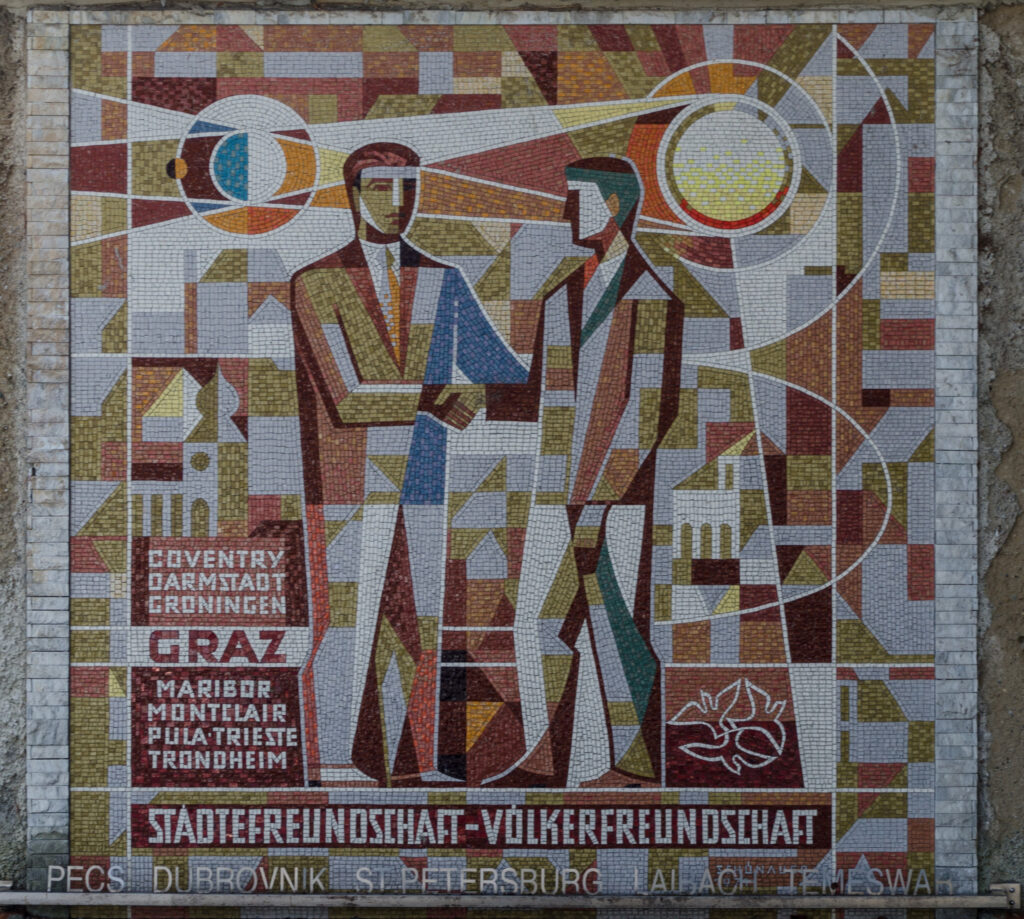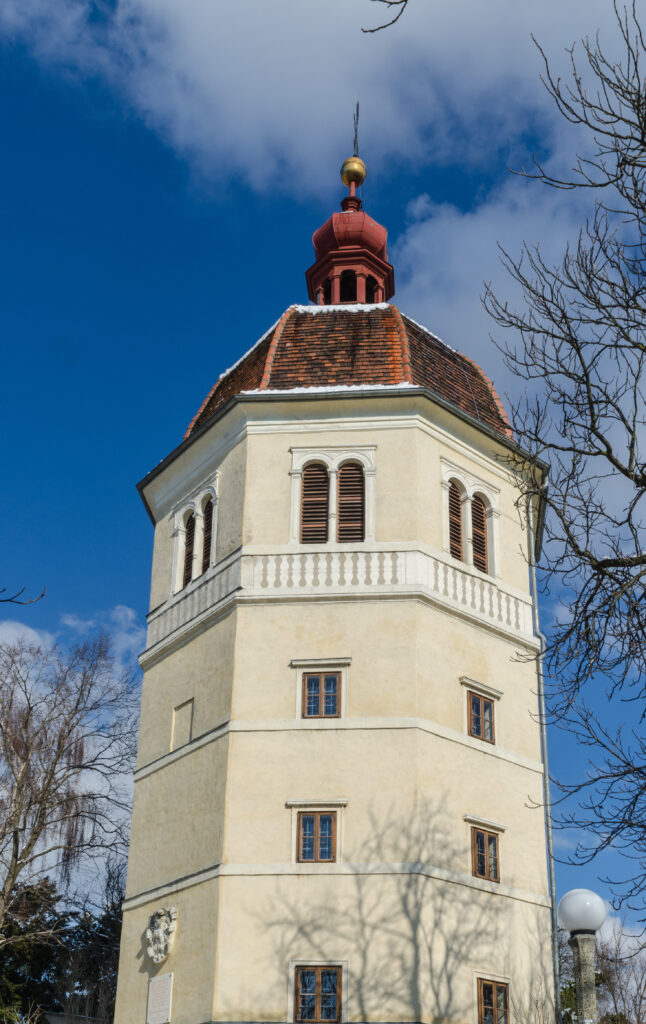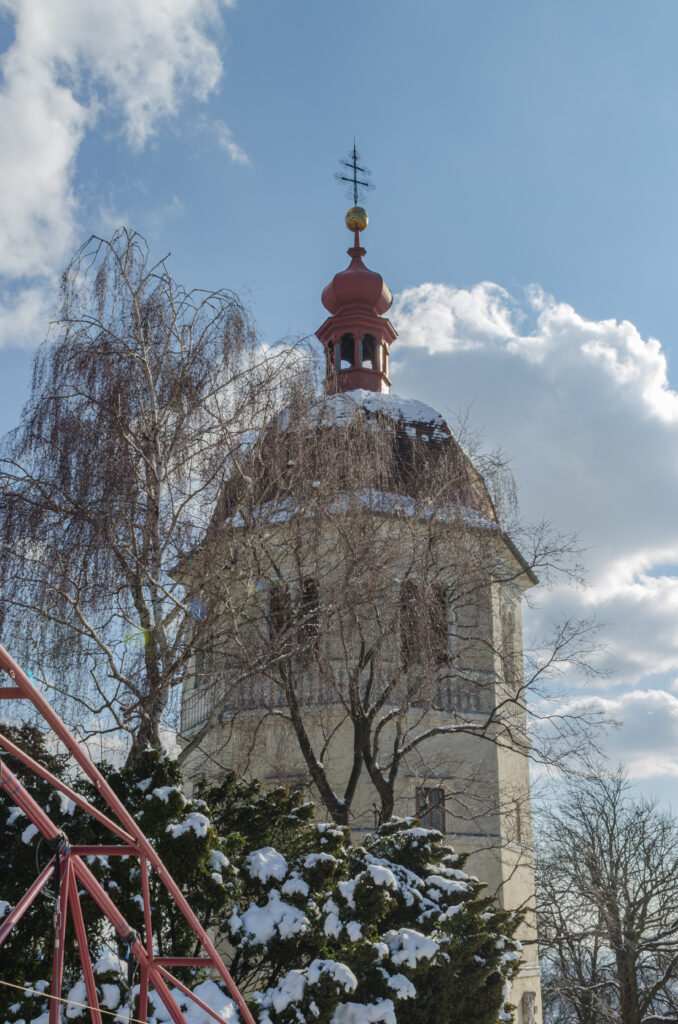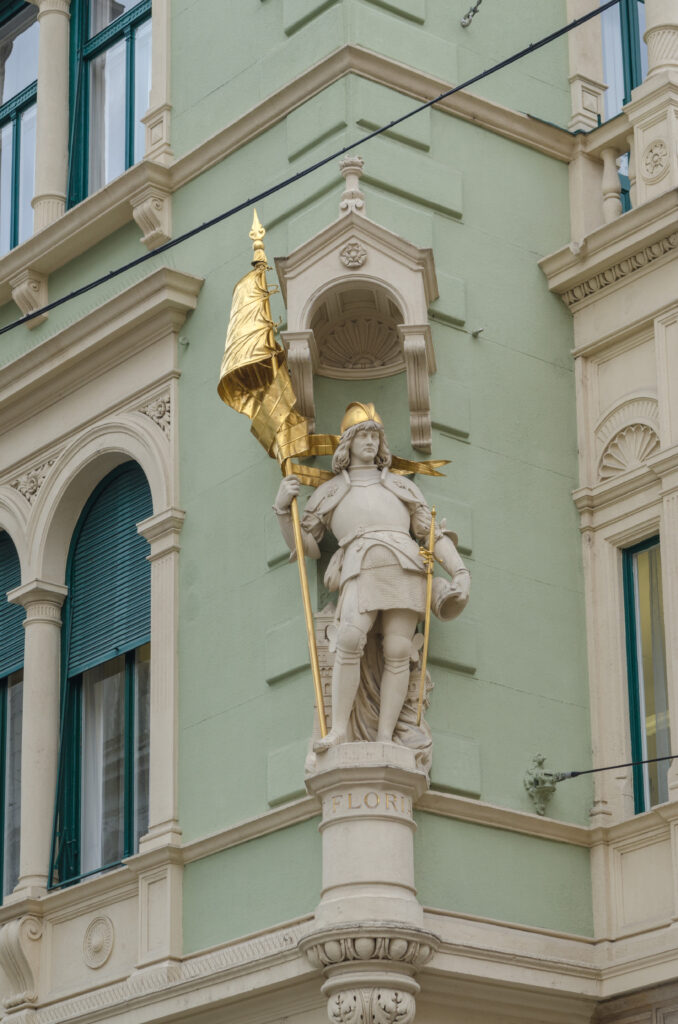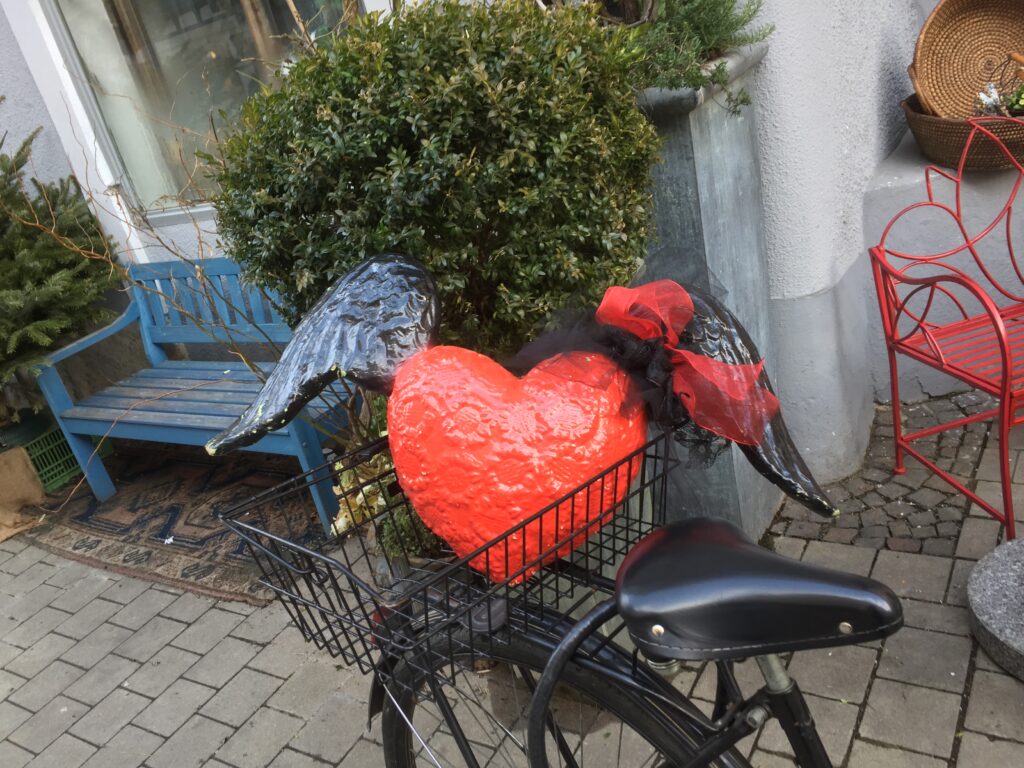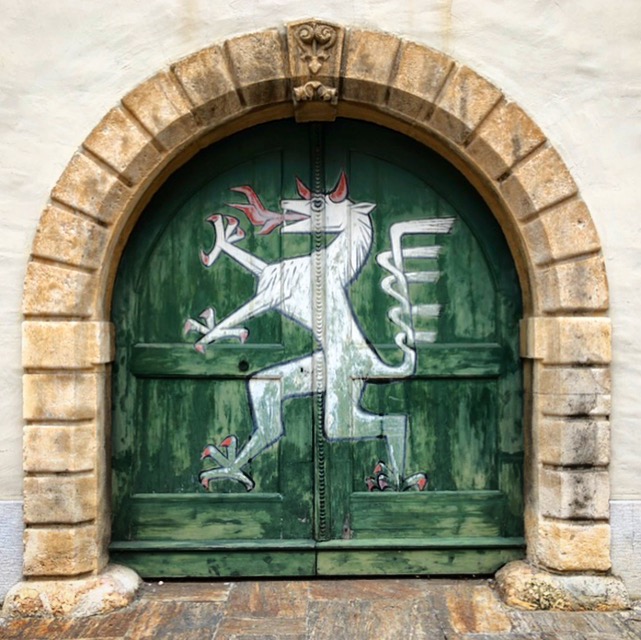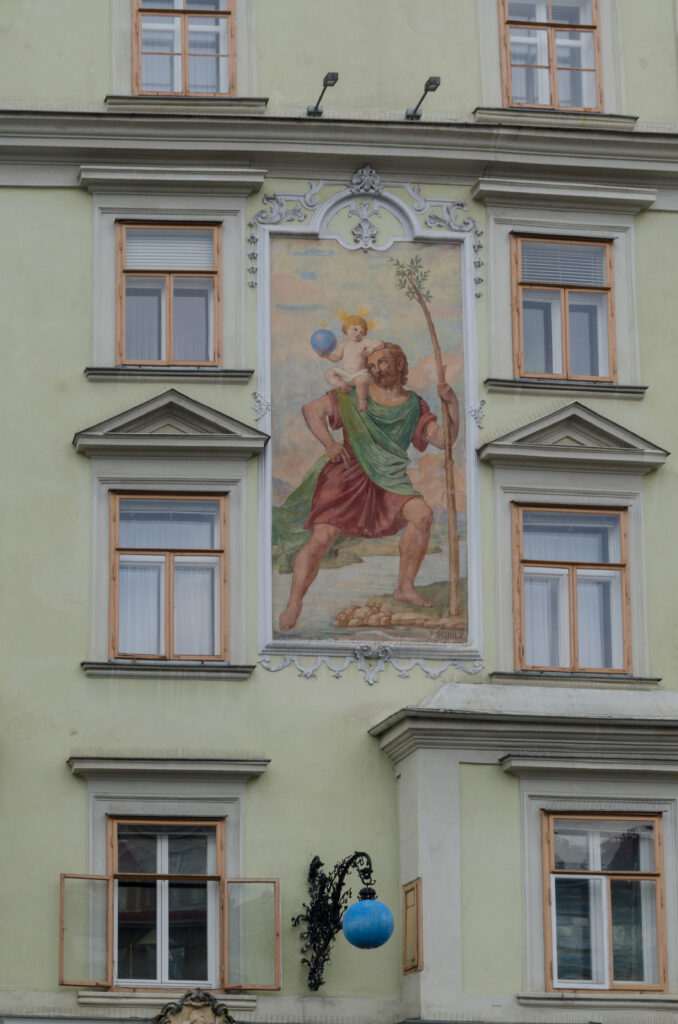Back in early 2018, I took a little Valentines day trip to Graz. I didn’t get a chance at the time to write up the trip. So here’s a reminder from way back when travel was free and easy.
My morning begins early, horribly early. I’m catching the 07.58 train from Wien to Graz. While it’s early, the ticket price was a steal, just €9 each way. The downside to these deal is usually an early or a late departure. My train today is the EC150, a Eurocity service that’s operated by Slovenian railways, and will run on from Graz to Ljubljana. For me its a 2 hour 30 journey through the Alps. I board and settle into a nice single seat, which is very comfortable. departing on time, my journey will take in Wien Meidling, Wiener Neustadt then into the alps, stopping at Semmering, Mürzzuschlag, Kapfenberg, Bruck/Mur and on to Graz. It’s slow going once we leave Wiener Neustadt as the track bends and climbs high up into the mountains. Here speeds drop, even for the Railjets that operate the same route. In a few years, ÖBB will have finished a huge new tunnel system that will cut the journey time by 30 minutes. Today though, in the early morning light, I’m treated to beautiful views and snow-covered mountains.
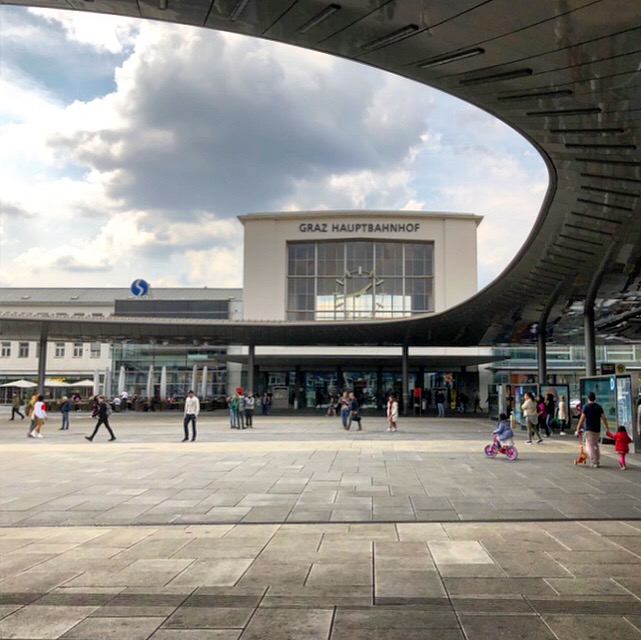
The train arrives at Graz on time and frankly, I’m hungry. I buy a ticket for the tram and head into the city. Graz is actually a small city, and I could have walked to the centre within 15 minutes or so, but as this is my first time in the Styrian city, the tram seemed more sensible. First stop, its breakfast. Bakeries in Austria do some fantastic breakfasts. I settle on a bakery partway up a hill and order a basic Wiener Früstuck. This is usually made up of a croissant and a Semmel, with a choice of butter and sweet preserve, and a coffee. When it arrives, It’s clear the bread and pastries are freshly baked and the preserves and butter locally sourced. I would have taken a picture but I was hungry and scoffed the lot with little ceremony.
Feeling suitably refreshed, I’m ready to explore. My initial thoughts are that the city is stunning and exceedingly green. Well, it would be exceedingly green had it not been February and snow had fallen. That said, the sun is out, the sky a deep shade of blue and combining it with the snow, paints a beautiful picture. The city has everything. A river that runs through a wide valley, in the heart of the Alps and with a hill with a sheer cliff in the centre. All in all, I’m hoping for a nice day.


Since I’m already heading up a hill, I decided to see where it leads. Apparently, it leads to a wide-open Platz, known as Karmeliterplatz. Here I spot two unusual sights. First up is a green and white cow. This is unusual by itself. The fact it has wings and is making a bid for flight is doubly unusual. It turns out to be the mascot of the Steirisiche Volkspartie, or the Styrian Peoples Party, an offshoot from the OVP. I’ll stay out of the politics of the matter, but I really do love the cow. Steiermark is very much a farming county. Away from the flying cow, I see a building that has a beautifully painted exterior. Painter exteriors are common in Graz, but this one is much more modern. It turns out that the building is home to the Stieremark provincial archives and the picture on the exterior, while looking new and modern, also has a solar clock. I’ve seen many of these on churches but this is new, and it’s wonderful. With the sun out today, you can even see how it works.
Curiously, here you get a hint as to how vibrant Graz can be. While Karmeliterplatz has many old buildings surrounding the square, in the east corner, next to the city’s Stadtpark, stands the very modern NH City hotel and two other office blocks. All designed in the same Black, angular style. They shouldn’t fit with the surroundings, and yet they do.
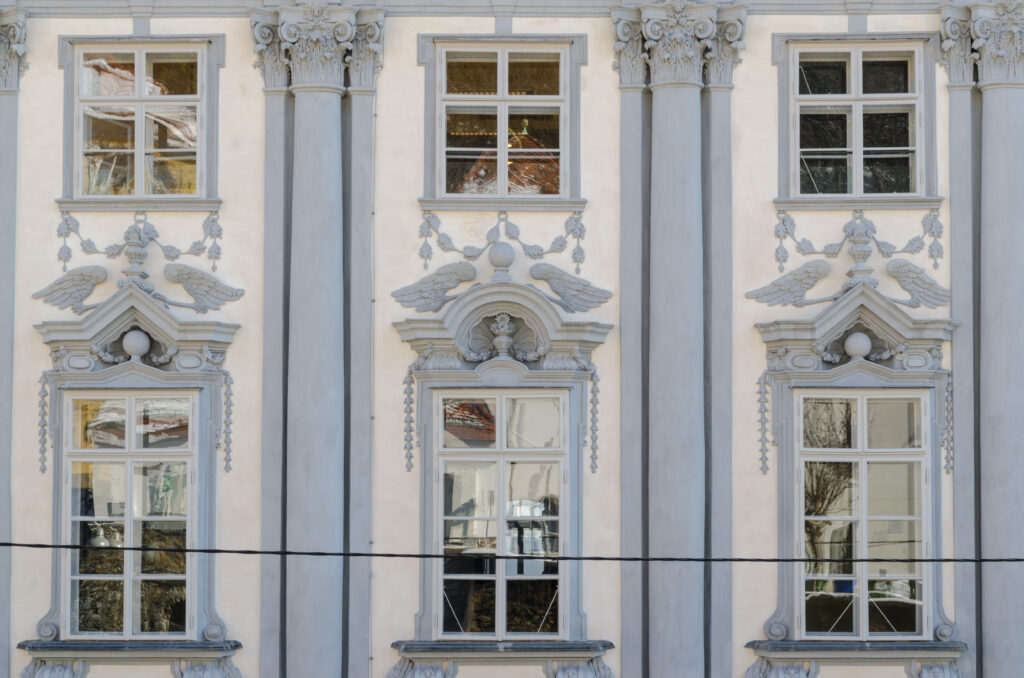
Moving on, I continue up the street and come across a beautiful building. It turns out to be a palace no less. dating from the 17th century, and originally a garden, the Palace has an interesting history, including being sold to a Monastery, spent time as a hospital before being bought from the Styrian state by the Federal government after World War 1 to become the home of Graz Police force. Today the Police still occupy the building. The external fascia is still in top condition though. There aren’t many police forces who can claim to have their very own palace.
From here the only way is up as I tackle the Schlossberg. This park sits high above Graz and dominates the look of the city. It’s also a bit of a climb to the top. The road I’m following winds a little before it brings me up to the Urhturm, or Clock tower. The Uhrturm is one of the oldest buildings in Graz. The original core of the tower dates back to 1265 when the tower formed part of the fortress that sat atop the Schlossberg. The current tower was renovated in the 16th century and that’s pretty much how it looks now. While the fortress was eventually destroyed, the citizens of Graz bought the tower and saved it.

I head a little further up the hill to the Chinesischer Pavilion. Here I decided to sit and soak up the view. Despite it being February and snow had fallen recently enough to make some paths tricky, The sun kept me warm enough to enjoy the view for a good 45 minutes. The view was stunning. After a while though, it was time to continue wandering. Aside from the Uhrturm, the Schlossberg is home to a museum, Several restaurants and biergartens, most of which were closed. This was definitely offseason after all. There’s also an open-air theatre, plenty of places to soak in the view, and ‘Liesl’ the Glockenturm or bell tower. Like the Uhrturm, the bell tower has some age to it, dating back to the 6th century. The Bell itself, named ‘Liesl’ is said to ring throughout the day, consistently for 101 rings. Following the war with the Ottoman Turks in 1532, the city recovered 101 cannonballs that were melted down to create ‘Liesl’ Hence the 101 rings.
One place that was open, but I didn’t get a chance to enjoy on that day was the cute little restaurant that sits at the edge of the cliff face, overlooking the city. Starcke Haus offers fine dining, a casual coffee and of course, a bier if needed, all with stunning views, including a great little Terrace. Like elsewhere around the Schlossberg, the Starcke Haus dates back to the mid 16th century and was originally a Gunpower storage room.
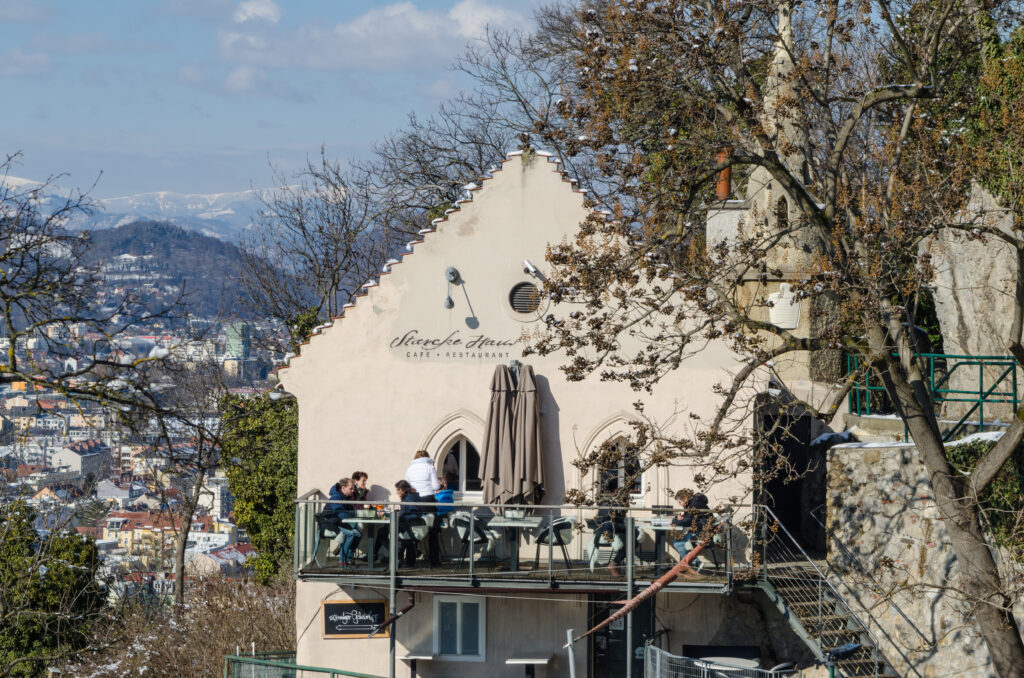
With a grumbling stomach though, I decided to head back down to town. Now the walk up was certainly tiring, and the prospect of walking down a twisting set of steps is not appealing. Fortunately, there’s a quicker way. Located near the Uhrturm is an elevator. Known as the Schlossberglift (original I know) it can whisk you back down to street level nice and quickly. A single trip costs just €1.80, it’s a great trip. The lift shaft takes you through the heart of the mountain and is illuminated with coloured lighting. There’s an intermediate stop if you fancy trying the toboggan run inside the mountain. I give it a pass today, but it’s on my ‘Must do’ list the next time in town. At the base of the mountain, you follow a tunnel out, passing a children’s ride, a little train that takes you on a ‘Time travel’ adventure inside the mountain.
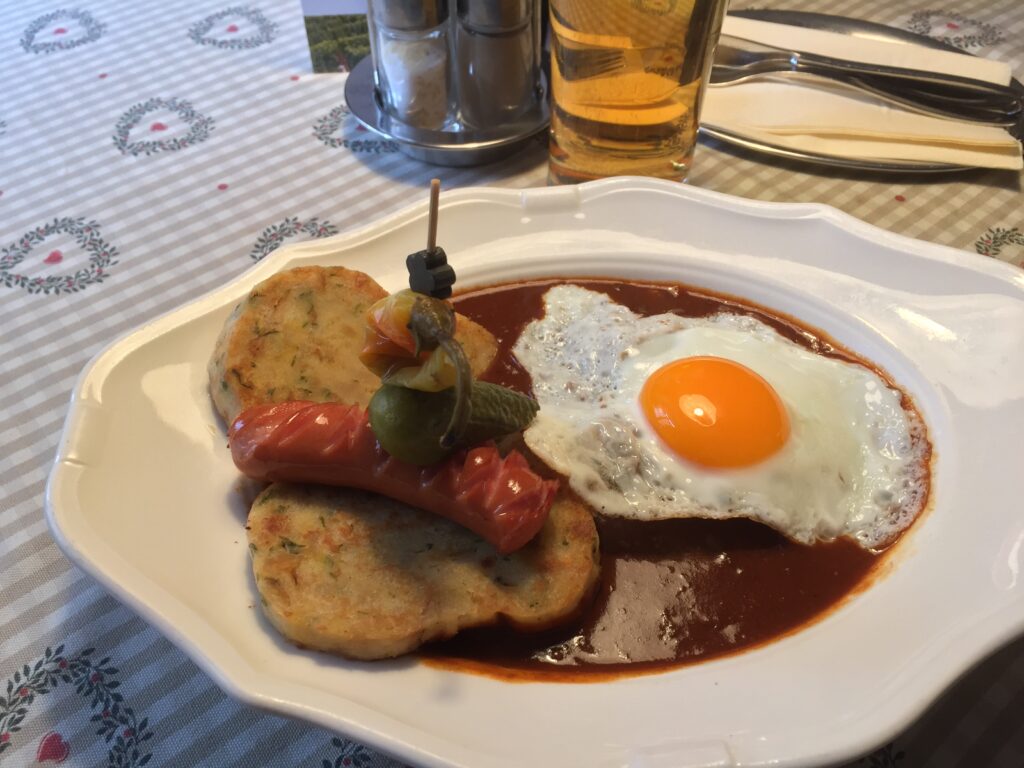
Back in the daylight and I find a great little Austrian place to eat called ‘Alte Munze’ or Old Money. The place is big on atmosphere and feels cosy and typically Austrian. It’s quiet today, as the lunch rush has died down. I order a bier and peruse the menu. I settle for the ”Herren Goulash’ or Man’s Goulash. This seems to be a very Graz specific naming. In Vienna, we call this Fiaker Goulash or Carriage driver’s Goulash. Names aside, what sets this aside from regular goulash are the extras. Alongside the goulash and dumplings, you have half a smoked frankfurter, Fried egg and a Gurkin. It feels like an odd combination but it all works and I try and eat this goulash whenever I see it.
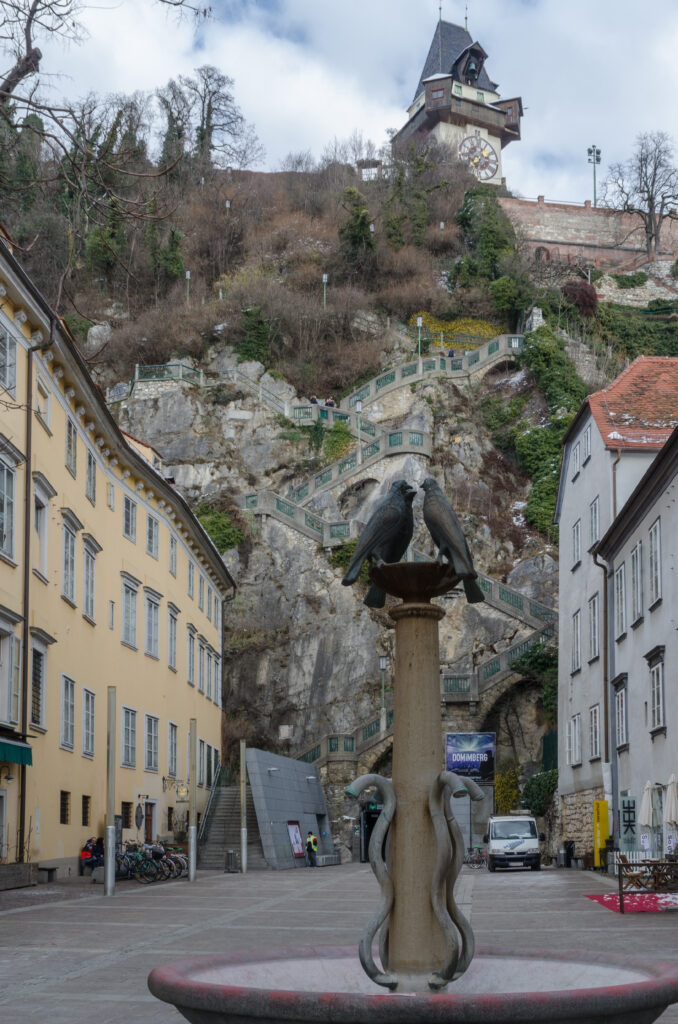

Post lunch I head into the parts of the city I haven’t seen. I cross the river and come across one of Graz’s most photographed spots, the Murinsel. This adorable little birds nest style structure sits in the middle of the river Mur and has a cafe and a small outdoor amphitheatre. It’s quiet today, but I imagine this is one of the best places to be in summer. Again its a very modern building that somehow blends with the older surroundings perfectly. Speaking of modern architecture, there’s one building in Graz that definitely doesn’t blend, The Kunsthaus Graz, affectionately known locally as the friendly Alien! The large blue, jellyfish-like structure defies accurate description, and if you want to photograph it, You’ll need to head to the Schlossberg to really get a good sense of the whole thing. Built as part of the 2003 celebration in Graz, Where the city honoured as the 2003 European city of culture, It was designed by British Architects Sir Peter Cook and Colin Fournier. Its striking features were designed to deliberately stand out, and stand out it does. It’s stunning and features a great shop and a fantastic cafe. A review of the Kunsthaus itself will come at a later time, and I can’t wait.

By now the sun was setting and it was getting close to my train time. I had a chance to look around the main square and main street a little before heading back to Graz Hauptbahnhof. This area is wonderful, filled with plenty of sights. From the beautifully adorned building facades to statues and cute little shops, Graz really is a great place to visit. My final find was the adorable little pavilion that sat opposite the Graz opera. The small 19th-century pavilion contained the Opern Pavilion cafe and had I enough time, I’d have stopped for a last coffee and slice of cake. Sadly I had to go.
Graz, I think I love you!
Reaching the station, I find my train sat on the platform, ready to go. we depart on time and as the sun sets over the alps, I reflect on a day’s wandering. Graz has surprised me. It may be smaller than Vienna, but it feels so much more vibrant, more experimental. I saw plenty of small restaurants offering a variety of cuisines, sat alongside old-style bars. The city is reassuringly old but is most definitely not afraid to look to the future. Graz is a great city, and I can’t wait to return.

Getting There.
Getting to Graz is easy. There are trains every hour from Vienna. Most are RailJet services run in conjunction with Czech Railways. There are also a number of buses that make the trip. Journey times are all around 2 hours 30 minutes, and if you book early, tickets can be had for just €9.
Links.
Check out Graz Tourism for more details and great ideas of what to see and do.



